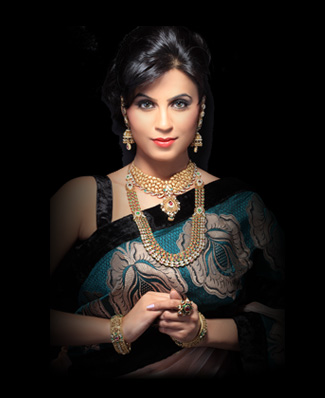
Jewellery Care
Diamond
Colour: Diamonds come in a wide spectrum of hues, from completely colourless to slightly yellow and even brown. They are graded on a colour scale that starts from D (colourless) and proceeds through to Z, getting progressively more yellow. The whiter a diamond, the greater its value. The formation process of diamond makes only a few truly colourless and rare diamonds, and such diamonds are considered very valuable and precious.Clarity: Clarity of a diamond is a measure of its purity. Clarity defines the extent of flaws in the diamond, its ability to allow free passage of light without obstruction and its true value. All diamonds have natural imperfections like minute traces of non-crystallised carbon and other trapped deposits. Like a birthmark, these inclusions are nature's signature which makes every diamond unique. As long as inclusions do not affect the stone's strength or seriously impact its appearance, you don’t have to worry about it.
Diamond clarity determines its value. The lesser the inclusions in the diamond, the more will be its worth and purity.
Carat: Carat is actually a unit of measure that defines weight of a diamond, not its size. The word carat is derived from the word carob (from carob seeds). It’s believed that in ancient civilisations the weight of diamonds was measured using carob seeds as its equivalent on scales.
One carat is equal to 200 milligrams and each carat is divided into 100 parts called 'points'. So a 1-carat diamond has 100 points. However, cut of a diamond and its mounting can make it appear larger or smaller than its actual weight.
Cut: The true brilliance and beauty of a diamond’s colour lies in the hands of a master craftsman. The way each diamond is cut ensures its capacity to reflect light and sparkle. A skilled craftsman will cut and polish the natural roughness of the stone to transform it into a display of brilliance and fire, giving shape to a sparkling, polished diamond. A diamond’s cut is the only one of the 4C’s that’s determined by the human hand.
- Keep your jewellery boxes away from high heat and excessive moisture to prevent any damage to the stones.
- Store diamond jewellery always separately by wrapping in soft tissue or in fabric pouches.
- When you do physical exercises, you should take off your diamond jewellery to prevent it from scratching.
- While cleaning diamond jewellery, do not expose your diamond to salt water or harsh chemicals like chlorine or detergents as it can damage the diamonds badly.
- After wearing diamond jewels, clean it thoroughly with a clean, soft, slightly damp cloth before storing it back. This helps enhance the lustre.
- Have your diamond jewellery professionally checked for loose prongs or mountings and get it cleaned, about once a year.

Copyright © 2011 Mulchand R. Shah.
Designed and Developed by Orane Media
Designed and Developed by Orane Media

